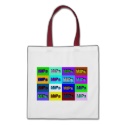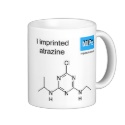|
|
Reference type: Journal
Authors: Parisi OI, Cirillo G, Curcio M, Puoci F, Iemma F, Spizzirri UG, Picci N
Article Title: Surface modifications of molecularly imprinted polymers for improved template recognition in water media.
Publication date: 2010
Journal: Journal of Polymer Research
Volume: 17
Issue: (3)
Page numbers: 355-362.
DOI: 10.1007/s10965-009-9322-7
Abstract: Abstract: New Restricted Access Materials-Molecularly Imprinted Polymers (RAM-MIP) were synthesized by using caffeine (CAFF), methacrylic acid (MAA), divinyl benzene (DVB) and glycidil methacrylate (GMA) as model template, functional monomer, crosslinking agent and pro-hydrophilic co-monomer, respectively. Furthermore, a screening of the ratio of functional monomer to template was performed. After the preliminary characterizations of conventional MIP prepared in absence of GMA, different GMA amounts were inserted in the pre-polymerization feeds and different reactions conditions were tested for GMA epoxide ring opening. In particular, perchloric acid, ammonia, lactic acid, glycine and triethylene glycol were chosen for this purpose. In perchloric acid and ammonia cases, a further modification was performed by phosphorylation and methylation procedures, respectively. Imprinting efficiency of all the obtained materials was evaluated by binding experiments using caffeine and its analogue theophylline both in organic and in water media. The increased hydrophilic characteristics of RAM polymers by water absorption measurement and protein binding experiments were performed
Template and target information: caffeine, CAFF
Author keywords: Molecularly imprinted polymers, Restricted access materials, Water media, surface modification
|


 multi MIPs tote bag
multi MIPs tote bag







 MI cryptic logo mousepad
MI cryptic logo mousepad







 Atrazine template mug
Atrazine template mug






